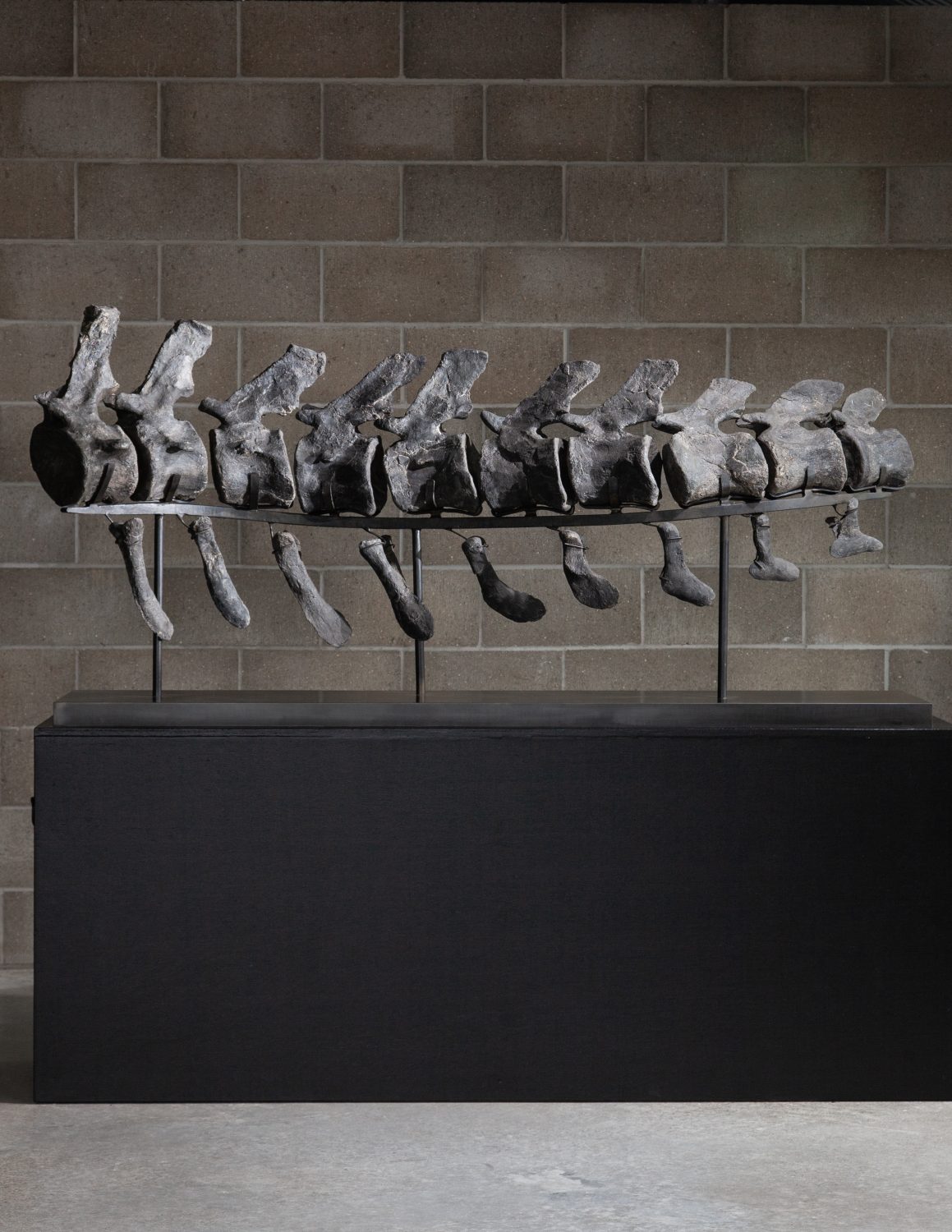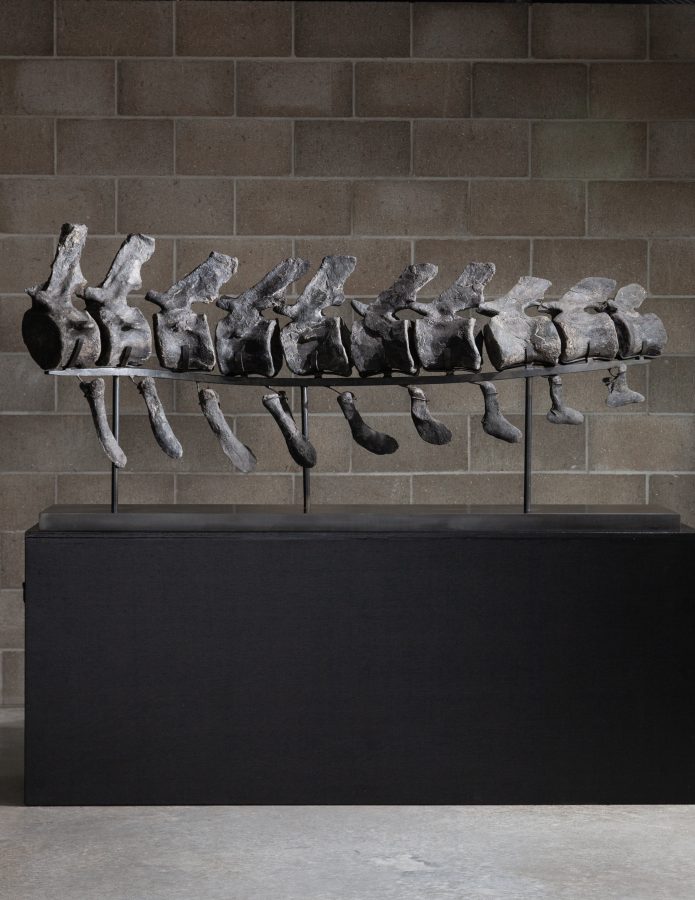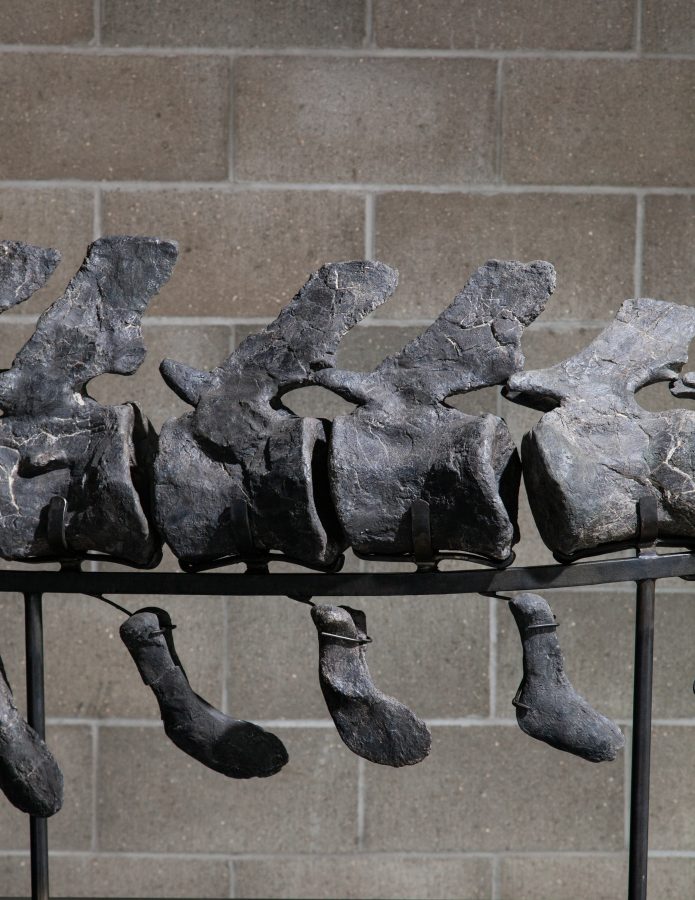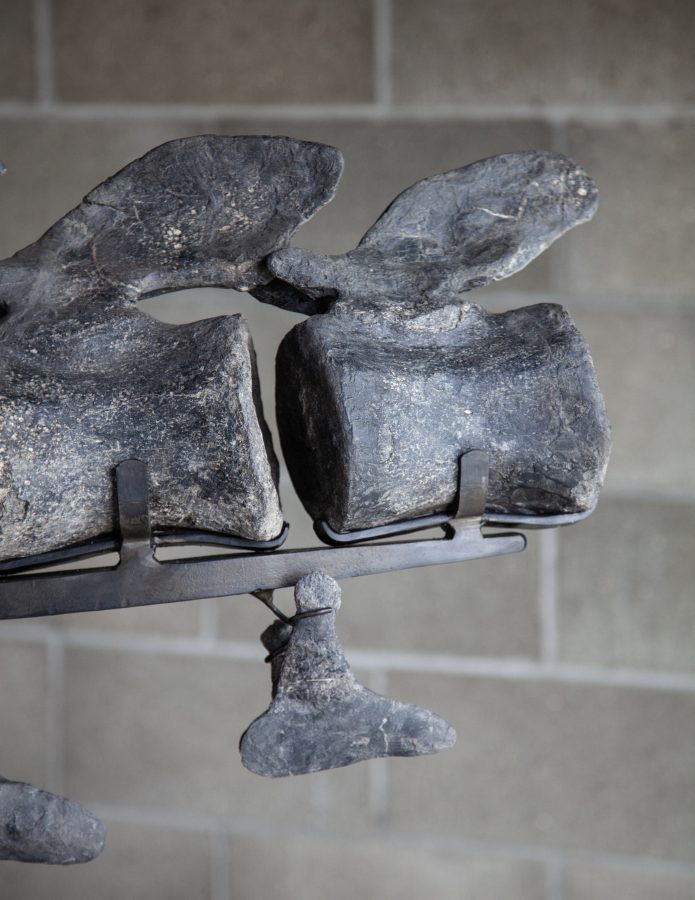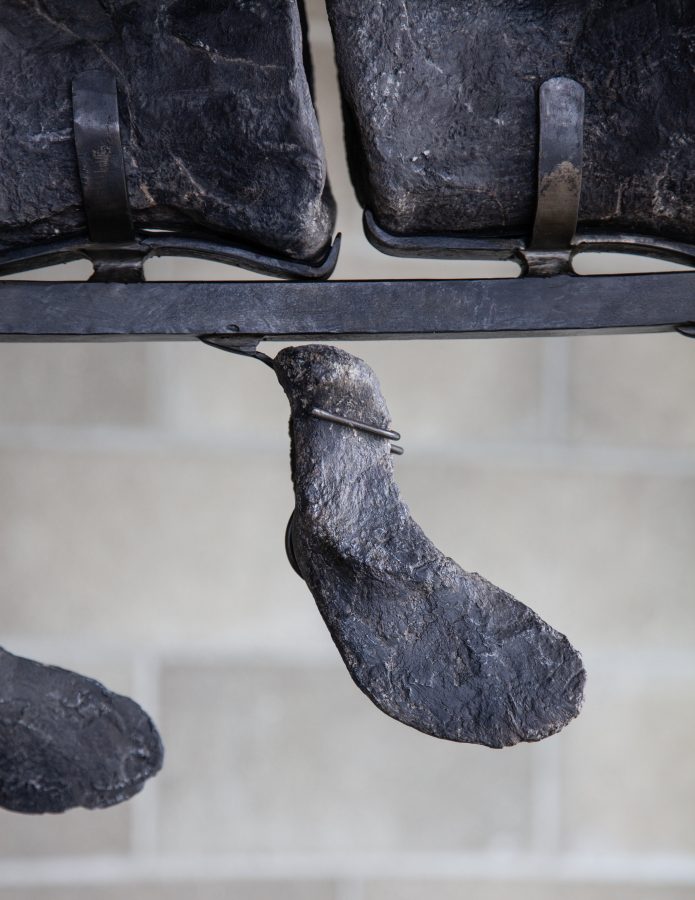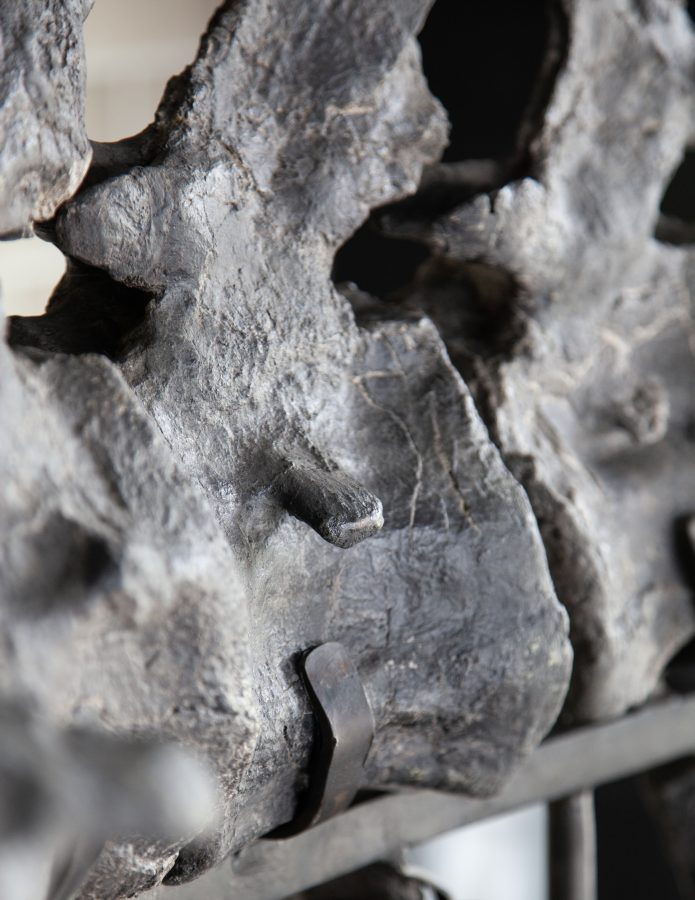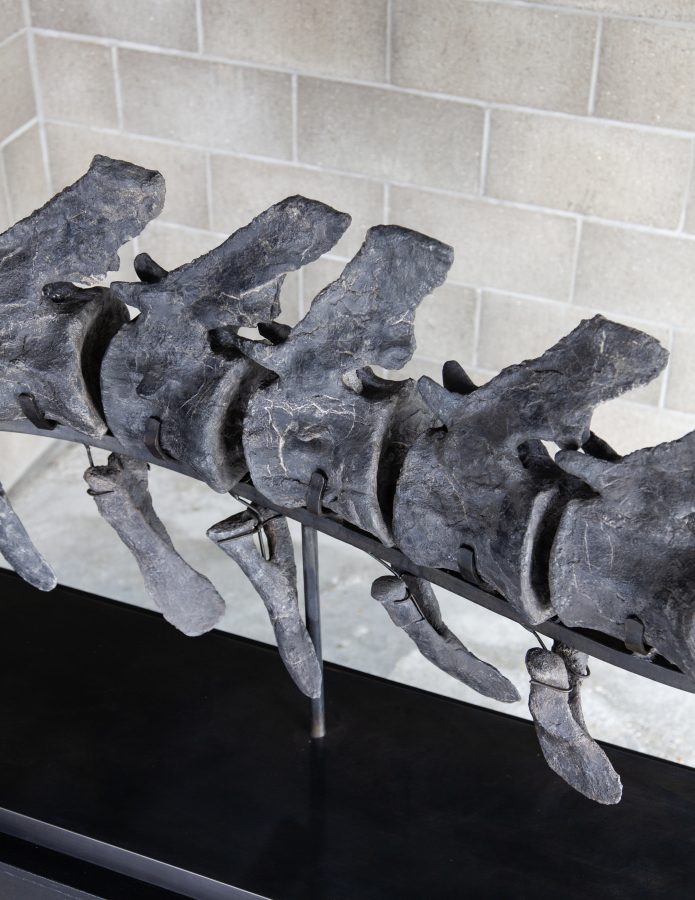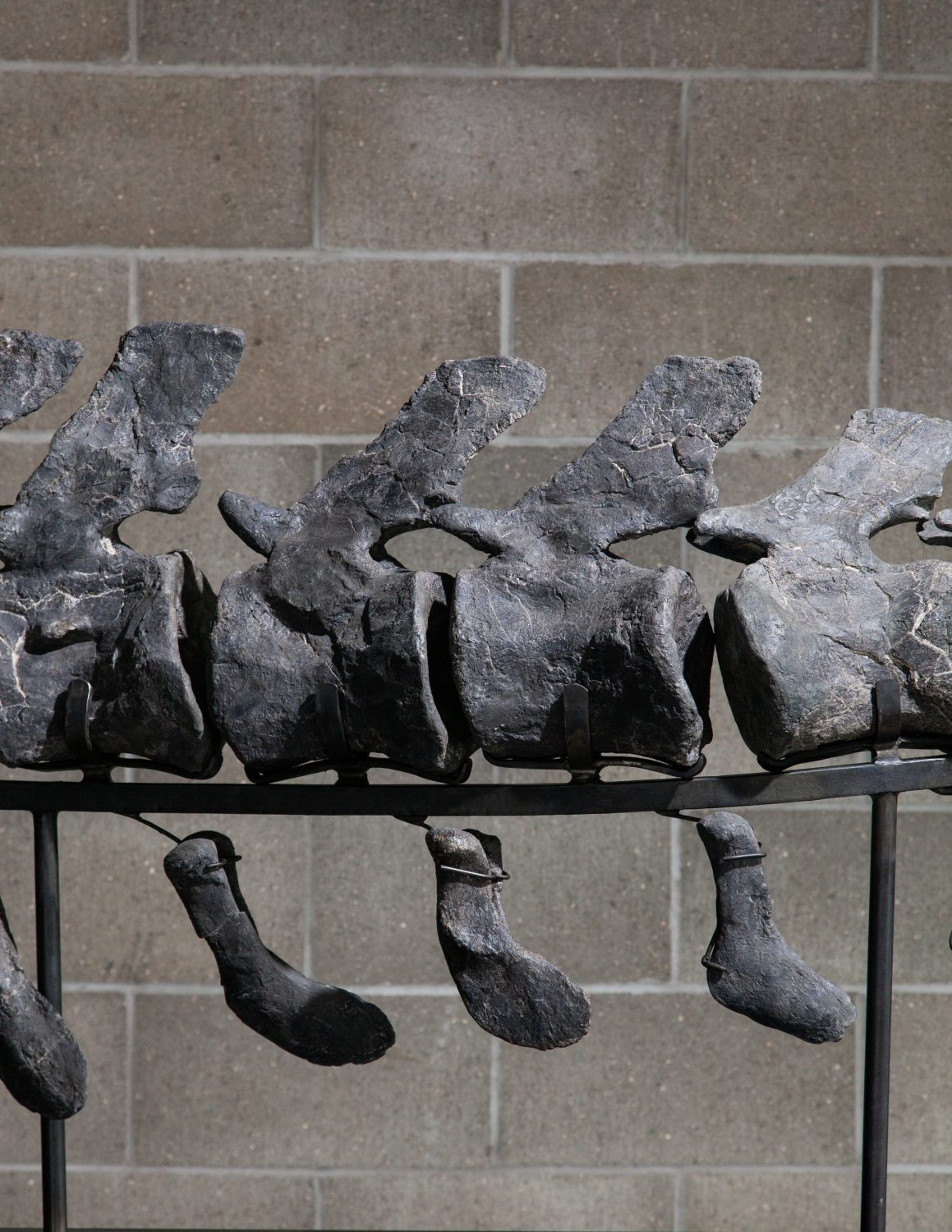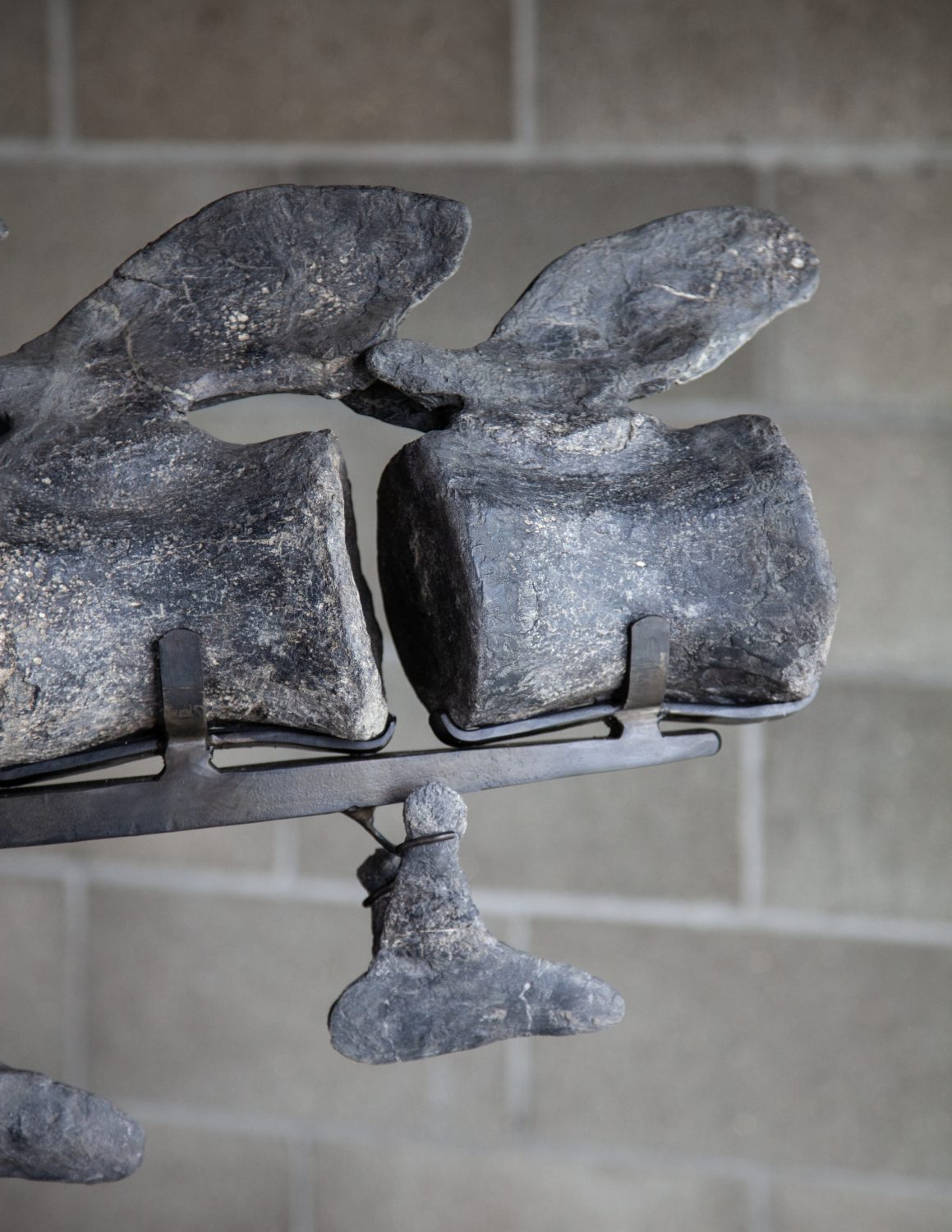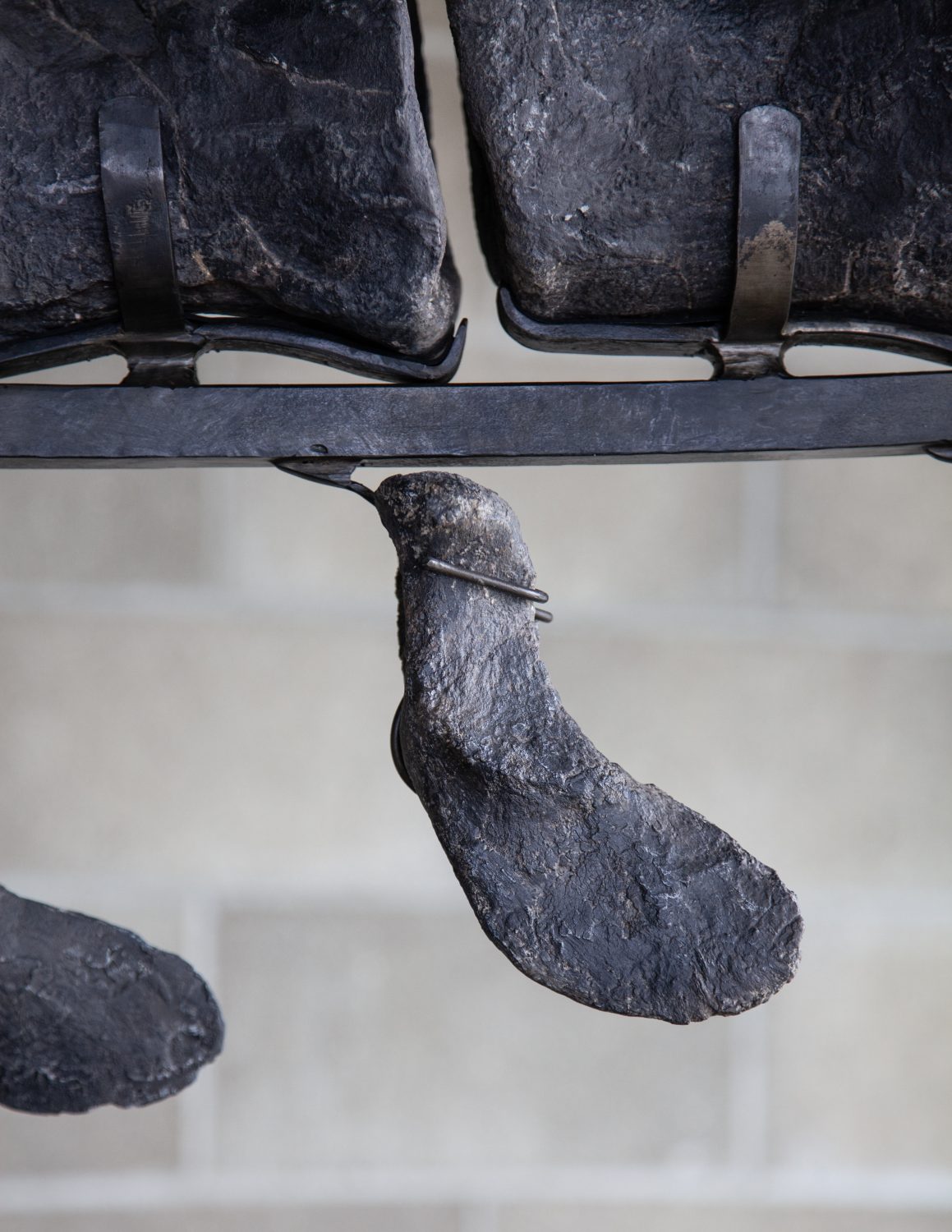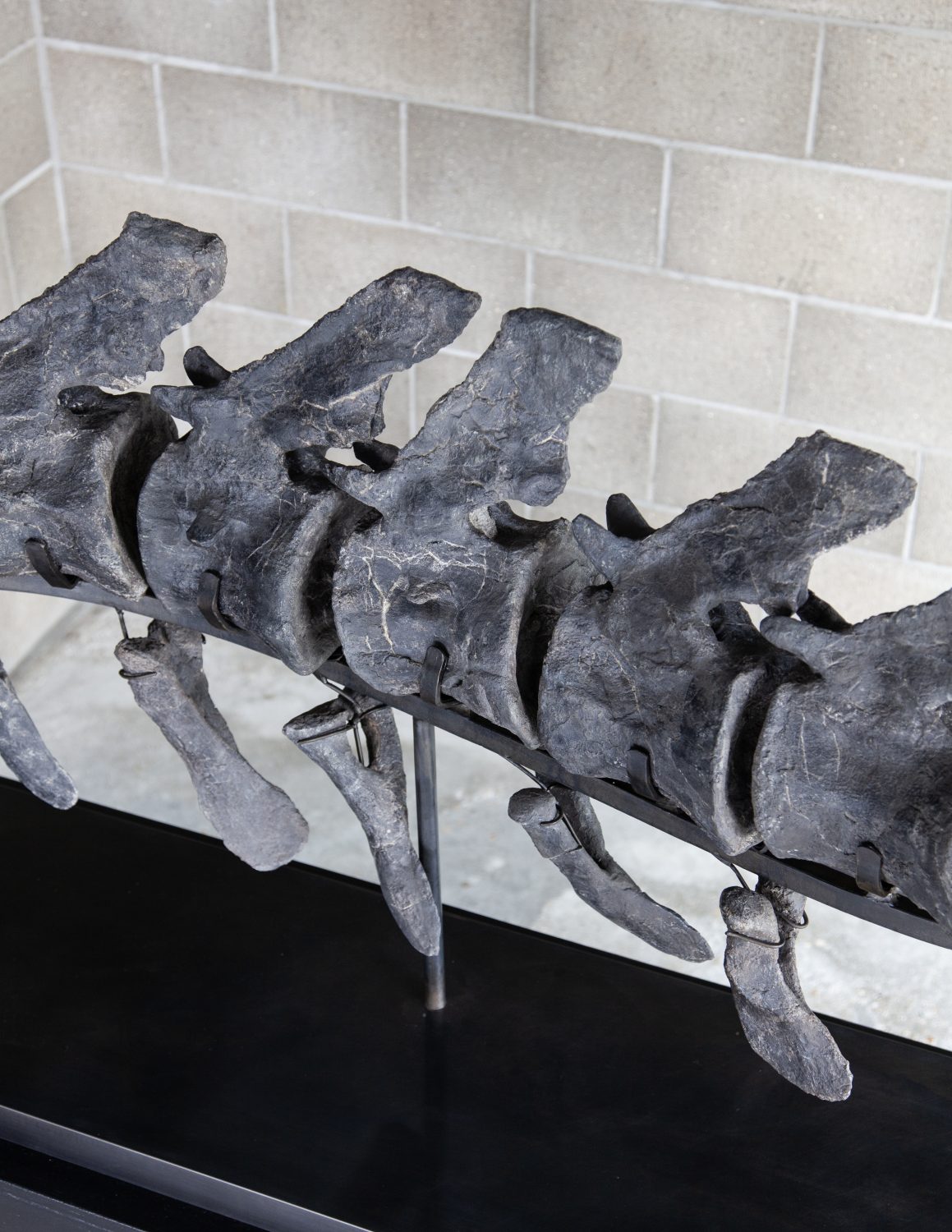| Species: | Camptosaurus sp |
|---|---|
| Location: | Colorado, USA |
| Age: | 150 Million Years (Jurassic) |
| Size: | H92cm W198cm D50cm |
| Price: | P.O.A |
| Availability: | Available | Enquire |
The Camptosaurus, a herbivorous dinosaur that roamed the Earth during the Late Jurassic period, is a fascinating creature that captivates the imagination with its unique features and behaviors. Belonging to the ornithopod group of dinosaurs, the Camptosaurus was characterized by its relatively small size, reaching lengths of around 6 meters and standing about 2 meters tall at the hips. Its slender build and agile nature suggest that it was a swift and nimble creature, adept at foraging for vegetation in the lush Jurassic landscapes.
One of the most distinctive features of the Camptosaurus was its dental structure, which consisted of rows of tightly packed teeth that were ideal for grinding plant material. This adaptation allowed the Camptosaurus to efficiently process tough vegetation, enabling it to thrive in environments abundant with ferns, cycads, and conifers. Its diet likely consisted of a variety of plant matter, and it may have used its hands with semi-opposable thumbs to grasp and manipulate food while feeding.
In terms of locomotion, the Camptosaurus is believed to have been a bipedal dinosaur, using its powerful hind legs for swift movement across the landscape. Its long tail served as a counterbalance, aiding in agility and stability while navigating uneven terrain. Fossil evidence suggests that the Camptosaurus may have also been capable of quadrupedal locomotion, utilizing both its hands and hind legs for different types of movement as needed.
Overall, the Camptosaurus represents an intriguing example of the diverse array of dinosaurs that once inhabited our planet. Its unique adaptations for herbivory, agile movement, and potential versatility in locomotion make it a subject of interest for paleontologists and dinosaur enthusiasts alike, shedding light on the complex ecosystems and evolutionary history of the ancient world.
